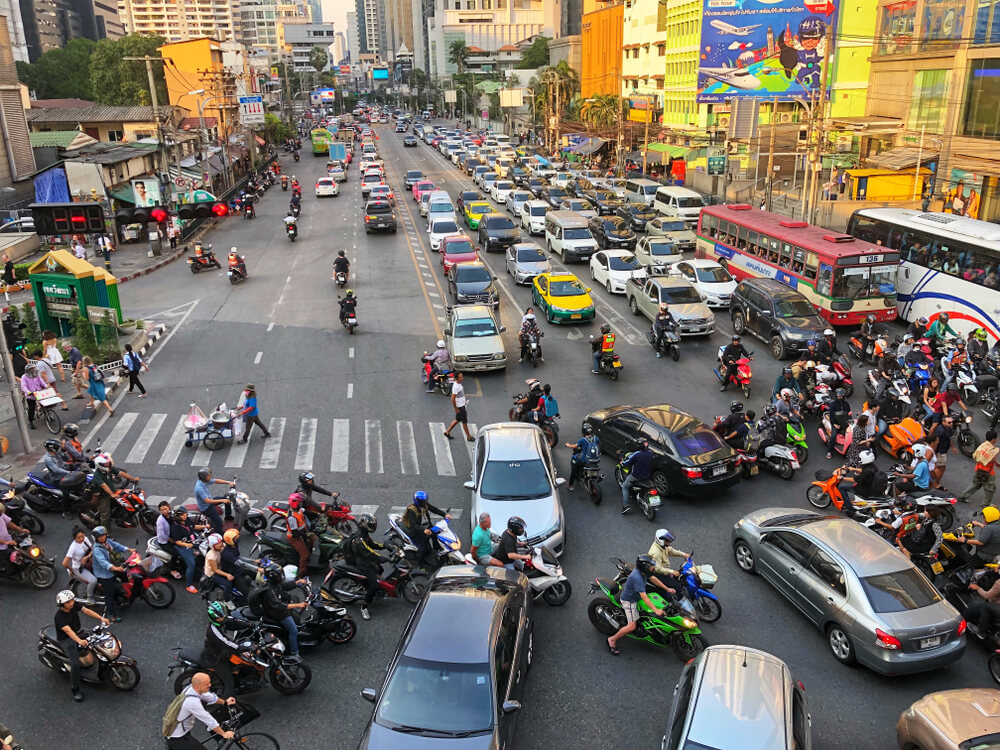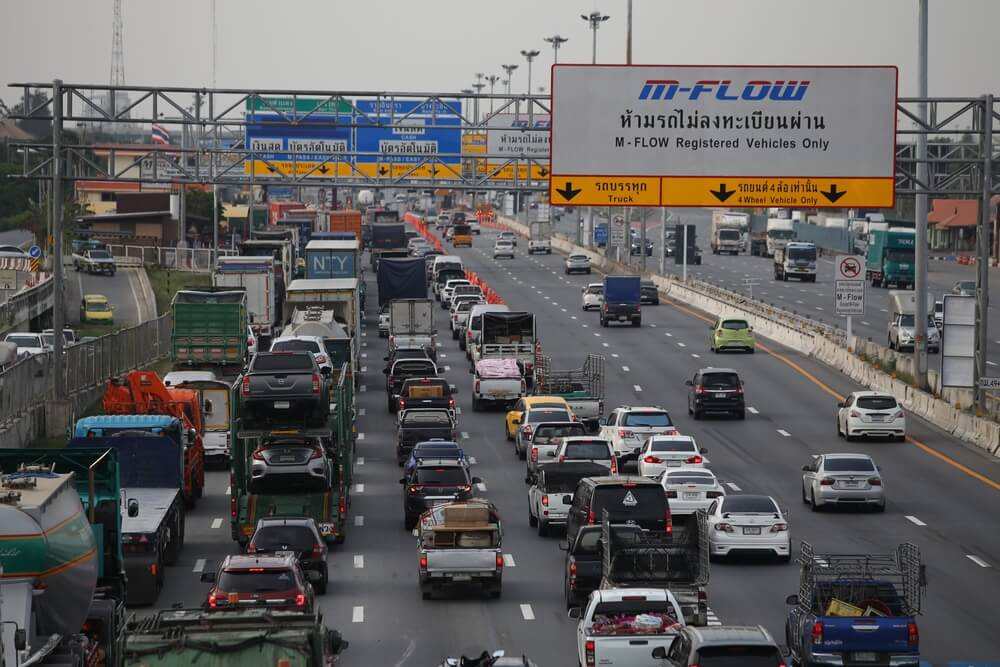Exploring Thailand on a scooter is an adventure many tourists dream about. Yet, understanding the traffic laws can be a bit tricky. One important fact to know is that, by 2025, Thailand will have specific traffic regulations in place for tourists riding scooters.
This guide aims to make these rules simple and clear for you. We cover everything from getting your international driver’s permit to renting a scooter safely. Keep reading to master the roads of Thailand with ease.
Driving Regulations in Thailand for Tourists on Scooters in 2025
Driving in Thailand on a scooter comes with specific regulations for tourists. Tourists must follow the rules closely to ensure a safe and enjoyable experience on the roads.
Understanding the rules and procedures
Tourists in Thailand must follow specific driving regulations for scooters. Understanding these rules is crucial for a safe experience. Always carry essential documents, including your local driving licence and an International Driver’s Permit (IDP).
These papers prove you can legally ride a scooter.
Traffic signals are important to follow. Speed limits are usually displayed on signs along the roads. Helmet laws in Thailand require riders to wear helmets at all times, ensuring safety while riding.
Familiarising yourself with these rules will help avoid traffic violations and penalties during your trip. Next, let’s explore how to rent a scooter in Thailand properly.
Essential documents: License and IDP
Understanding the rules and procedures leads to essential documents: a driving licence and an International Driving Permit (IDP). You must have both to ride a scooter in Thailand. The Thai authorities insist on having these documents handy while driving.
Foreign visitors should not drive without a valid licence issued by their home country.
An IDP serves as a translation of your national driving permit into multiple languages, including Thai. Renting a scooter in Thailand often requires showing these documents at the rental shop.
Without them, you risk fines or even confiscation of the scooter. Carrying photocopies of these documents might also prove useful during police checkpoints or if you need to report an accident.
Traffic signals and speed limits
Traffic signals guide riders in Thailand. Red means stop, green allows movement, and yellow warns about the upcoming change. Tourists must obey these signals to avoid accidents and fines.
Speed limits differ across areas. In cities, the limit often stays at 50 km/h. On highways, it can rise to 90 or even 120 km/h depending on the road type.
Motorbike laws in Thailand are strict regarding speed regulations. Check for local signs that indicate specific limits. Breaking traffic rules leads to penalties like fines or tickets.
Always stay alert for police checkpoints; they enforce these laws rigorously for tourist safety.
Mandatory use of helmets and seat belts
Wearing a helmet is a must for all scooter riders in Thailand. Tourists should know that police frequently enforce this rule. The law requires helmets, and fines await those who ignore it.
Seat belts are also essential for car passengers, ensuring safety during journeys on the road.
Tourists must comply with these regulations to avoid penalties. Understanding traffic rules in Thailand protects both visitors and locals alike. Next, we’ll explore how to rent a scooter in Thailand properly.
Renting a Scooter in Thailand
Renting a scooter in Thailand is easy and fun. You need to show your ID and an international driver’s permit to rent one. Prices vary, so shop around for the best deal. Make sure you have insurance for safety.
Always check the condition of the scooter before you ride off. For more tips on riding a scooter safely in Thailand, keep reading!
Requirements and costs
To rent a scooter in Thailand, tourists need to meet certain requirements. Most rental shops require an International Driver’s Permit (IDP). A valid IDP confirms that visitors can legally ride scooters.
Tourists should also provide a passport for identification. Costs vary by location and type of scooter but generally range from 150 to 500 baht per day.
Tourists must consider insurance coverage when renting. Some shops include basic insurance, while others offer additional options for extra fees. It is wise to check what the policy covers before riding off on your scooter.
Always keep safety in mind and enforce strict adherence to motorcycle laws in Thailand to avoid issues during your trip.
Insurance coverage
Renting a scooter means understanding insurance coverage. Most rental companies in Thailand offer basic insurance with their scooters. This typically covers damage to the bike but may not cover injuries or theft.
Look for comprehensive plans that include personal accident coverage. Some policies also provide protection against third-party claims. Verify the details before signing any agreement.
Having adequate insurance ensures you drive safely without worrying about unexpected costs from accidents or damage.
Safety precautions
Insurance coverage protects you while riding a scooter in Thailand. Before hitting the road, check your policy for specifics on medical and accident costs. Review what is covered before making any commitments.
Always wear a helmet. It significantly reduces injury risks during accidents. Avoid driving at night unless necessary due to poor visibility and unexpected hazards. Stick to well-lit areas and remain alert for other vehicles or pedestrians.
Stay focused on the road at all times. Distracted driving can lead to serious accidents. Keep your phone away while riding, as it can divert your attention from traffic laws for tourists in Thailand.
Familiarise yourself with scooter regulations for tourists; knowing these rules helps enhance safety while enjoying your trip.

Road Rules and Penalties
Obeying traffic laws is crucial for all riders. Breaking these rules can lead to fines and other penalties.
Adhering to traffic laws
Tourists in Thailand must follow traffic laws. These laws ensure safety on the roads. Always ride with an International Driver’s Permit (IDP). This document is essential for renting a scooter and driving legally.
Understand the importance of obeying speed limits. They vary by area, so pay attention to signs.
Wear a helmet at all times while riding. It is mandatory and protects you from injuries. Seat belts are required if you’re in a car or on certain vehicles. Fines for traffic violations can be steep, so adhere to road rules carefully.
Follow instructions at police checkpoints calmly and respectfully; showing your documents can help avoid issues.
Consequences of violating regulations
Violating traffic regulations in Thailand can bring serious consequences. Fines for offences like speeding or driving without a license can range from 500 to 2,000 baht. Police often set up checkpoints to enforce these laws.
Ignoring traffic signals might result in hefty penalties and even court cases.
Scooter rental regulations also require tourists to carry their international driver’s permit for proper identification. Keeping safety measures in mind helps avoid accidents and complications on the road.
Next, let’s look at how to deal with police checkpoints effectively.
Dealing with police checkpoints
Police checkpoints are common in Thailand. Tourists on scooters should stay calm and cooperate fully. Authorities often check for valid documents like your driving licence and International Driver’s Permit (IDP).
Carry these essential papers at all times to avoid issues.
Be polite when speaking with officers. They might ask for identification or inspect your scooter for safety features. If you violate traffic laws, expect fines on the spot. Knowing local traffic rules helps prevent problems during these encounters.
Always drive responsibly to enjoy your experience in Thailand without complications.
Useful Resources and Tips for Driving in Thailand
Familiarise yourself with local road signs and their meanings to ensure a smooth ride. Prepare for emergencies by keeping essential numbers handy, like roadside assistance or local emergency services.
Road signs and their meanings
Road signs in Thailand keep drivers informed and safe. They use symbols and colours to convey important information. For example, a red octagon signals “stop.” A yellow triangle warns of obstacles ahead.
These signs help tourists understand what to do on the road.
Some signs indicate speed limits, like 60 km/h in urban areas. Motorbike riders should pay close attention to these limits to avoid fines for speeding. Other signs show directions or points of interest, making travel easier for tourists on scooters in Thailand.
Knowing these traffic rules is essential for enjoying your ride safely while adhering to local laws.
Emergency preparedness
Understanding road signs prepares you for safe driving. Emergency preparedness is crucial for all tourists in Thailand. Carry a basic first-aid kit on your scooter. This can help with minor injuries or emergencies.
Keep important phone numbers handy, including local emergency services. The police number in Thailand is 191, while ambulance services can be reached at 1669. Know how to contact your rental agency if needed.
Many companies provide roadside assistance for their scooters.
Stay aware of your surroundings and avoid risky situations. Drive cautiously at night, as visibility decreases significantly. Having an emergency plan ensures safety during unexpected events while exploring Thailand’s beautiful landscapes on a scooter.
Hiring a car in Thailand
Hiring a car in Thailand offers tourists flexibility. Many rental companies provide options that suit different budgets. You need to present an international driver’s permit (IDP) and your passport before renting.
Costs vary based on the type of vehicle and rental duration.
Insurance coverage is crucial for peace of mind while driving. Most rental firms offer basic insurance, but consider purchasing additional coverage for better protection. Staying updated on local driving regulations ensures a safe journey across this beautiful country.
Safety measures for driving at night
After hiring a car in Thailand, consider some safety measures for driving at night. Visibility drops significantly after sunset, making it harder to see other vehicles and road signs.
Always use your headlights when driving in the dark. Keep them clean to ensure they shine brightly.
Avoid areas with heavy nightlife or poor lighting if possible. Watch for pedestrians and animals on the roads as they may be harder to spot at night. Stick to main roads that are well-lit instead of quiet back streets.
Follow traffic rules for tourists in Thailand by obeying speed limits, especially since speeding fines can add up quickly. Stay cautious and alert while riding your scooter after dark to ensure a safe journey.
Thailand Traffic Laws in 2025
Thailand traffic laws for tourists on scooters are vital for safe travel in 2025. Make sure you understand the driving regulations, like having an international driver’s permit and always wearing a helmet.
Renting a scooter is simple if you follow the requirements and stay insured. Remember to obey road rules to avoid fines and penalties. By following these tips, your trip can be enjoyable and hassle-free.
Explore additional resources online for more safety advice before hitting the road in Thailand! Enjoy your ride and drive safely!
When you need to rent a bike or car in Thailand from a reputable provider, the natural choice is always SPS Car Hire Pattaya. Please click here to see our rental car options, or click on the button below to see our bike rentals.


